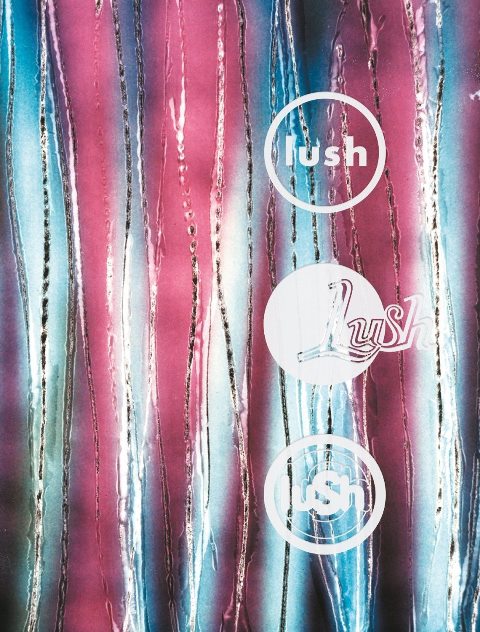Reissue CDs Weekly: Lush | reviews, news & interviews
Reissue CDs Weekly: Lush
Reissue CDs Weekly: Lush
Box set celebrates the recently reformed shoegazers who embraced Britpop

The news that Lush have reformed didn’t come as surprise. Their comparable contemporaries Ride and Slowdive had also done so over the past couple of years, and My Bloody Valentine – an influence looming over all three – returned in 2007 after over a decade’s abscence. Unlike the others, Lush, who were on 4AD rather than Creation, have reissued their complete catalogue as a box set during the run-up to re-hitting stages next May.
With Lush, editing is probably necessary to make a coherent musical statement. Up to 1994 they were, broadly, shoegazers. Then, from the early 1996 single "Single Girl" until their officially announced split in 1998, they abandoned the impressionsitic for straightforward Britpop-like pop. Sudden shifts of style weren’t atypical in the new, post-Oasis commercial environment: Ride became rockier from 1994, a process culminating in the clod-hopping Tarantula album. Lush’s change in musical direction brought chart success. Up to "Single Girl", their singles had scraped the lower reaches of the charts. Afterwards, they went Top 30.
 Over its five CDs, Chorus – presumably named after the guitar effect – tells the full story in terms of the music. Surprisingly, there is no essay so the tale overall is not told. Why the Britpop era effectively turned Lush into another band is, unfortunately, not explained. A case-bound, book-style set, Chorus is a lovely object and looks like a classic 4AD release. The three albums proper, Spooky (1992), Split (1994) and Lovelife (1996) are bookended by the two compilations Gala (1990) and Topolino (1996). With an album per disc, the bonus tracks on each include demos, radio sessions, non-album tracks and compilation appearances. The annotation does not include details of the original release of the previously issued bonuses, and this oversight renders it impossible to relate non-album tracks to their original parent album, single, EP or compilation album.
Over its five CDs, Chorus – presumably named after the guitar effect – tells the full story in terms of the music. Surprisingly, there is no essay so the tale overall is not told. Why the Britpop era effectively turned Lush into another band is, unfortunately, not explained. A case-bound, book-style set, Chorus is a lovely object and looks like a classic 4AD release. The three albums proper, Spooky (1992), Split (1994) and Lovelife (1996) are bookended by the two compilations Gala (1990) and Topolino (1996). With an album per disc, the bonus tracks on each include demos, radio sessions, non-album tracks and compilation appearances. The annotation does not include details of the original release of the previously issued bonuses, and this oversight renders it impossible to relate non-album tracks to their original parent album, single, EP or compilation album.
Matters are further complicated when the band’s story overall is pondered. Despite ostensibly being “hullo clouds, hullo sky” shoegazers, they had no problems with out-and-out pop: early on, they covered ABBA’s “Hey Hey Helen”. They signed with 4AD. The label's brightest stars had been Cocteau Twins, whose Robin Guthrie was their producer from 1989 to 1991. Lush’s sonic architecture overtly reflected that of Cocteau Twins. Lush changed bass players mid-stream when Steve Rippon was replaced by Phil King. The band’s song-writing frontline, Emma Anderson and Miki Berenyi, were ubiquitous London scenesters and music press coverage of their exploits distracted attention from the music. Most awfully, their drummer Chris Acland committed suicide in late 1996. The band never played again after that, and the spilt was announced in 1998.
'Chorus' amply demonstrates that Lush were a musical game of two halves
What is left, with Chorus, is the music. At their best, on Discs One and Two, Lush were – and still sound – fantastic. They dealt in a rock-grounded shoegazing. The vocals were wraithlike and the guitars shimmered but the drums and bass had the forward motion of a band which wanted audiences to move. Everything, bar a couple of remixes, on the first two discs needs to be heard.
With Disc Three and Split things are less balanced. King is on board and Guthrie is no longer their producer. The songs are as good as before, but a more direct production removes the music’s former inscrutability. As for the unambitious Britpop-inspired Lovelife, as Miss Jean Brodie said, “For those who like that sort of thing, that is the sort of thing they like.”
Chorus amply demonstrates that Lush was a musical game of two halves. From the perspective of now, their earlier, more sensitive material resonates most as it did not react to a sudden trend and has a greater depth. But this was not how they reached their commercial peak. Newly recorded material will be issued to accompany the reformation. It will be fascinating to see which of the two, virtually irreconcilable, versions of the old Lush wins through next year and which bubbles up on the new material. Only then will Lush reveal how they would like to be seen.
more New music
 The Songs of Joni Mitchell, Roundhouse review - fans (old and new) toast to an icon of our age
A stellar line up of artists reimagine some of Mitchell’s most magnificent works
The Songs of Joni Mitchell, Roundhouse review - fans (old and new) toast to an icon of our age
A stellar line up of artists reimagine some of Mitchell’s most magnificent works
 Album: Taylor Swift - The Tortured Poets Department: The Anthology
Taylor Swift bares her soul with a 31-track double album
Album: Taylor Swift - The Tortured Poets Department: The Anthology
Taylor Swift bares her soul with a 31-track double album
 Album: Jonny Drop • Andrew Ashong - The Puzzle Dust
Bottled sunshine from a Brit soul-jazz team-up
Album: Jonny Drop • Andrew Ashong - The Puzzle Dust
Bottled sunshine from a Brit soul-jazz team-up
 theartsdesk on Vinyl: Record Store Day Special 2024
Annual edition checking out records exclusively available on this year's Record Store Day
theartsdesk on Vinyl: Record Store Day Special 2024
Annual edition checking out records exclusively available on this year's Record Store Day
 Album: Pearl Jam - Dark Matter
Enduring grunge icons return full of energy, arguably their most empowered yet
Album: Pearl Jam - Dark Matter
Enduring grunge icons return full of energy, arguably their most empowered yet
 Album: Paraorchestra with Brett Anderson and Charles Hazlewood - Death Songbook
An uneven voyage into darkness
Album: Paraorchestra with Brett Anderson and Charles Hazlewood - Death Songbook
An uneven voyage into darkness
 theartsdesk on Vinyl 83: Deep Purple, Annie Anxiety, Ghetts, WHAM!, Kaiser Chiefs, Butthole Surfers and more
The most wide-ranging regular record reviews in this galaxy
theartsdesk on Vinyl 83: Deep Purple, Annie Anxiety, Ghetts, WHAM!, Kaiser Chiefs, Butthole Surfers and more
The most wide-ranging regular record reviews in this galaxy
 Album: EMEL - MRA
Tunisian-American singer's latest is fired with feminism and global electro-pop maximalism
Album: EMEL - MRA
Tunisian-American singer's latest is fired with feminism and global electro-pop maximalism
 Music Reissues Weekly: Congo Funk! - Sound Madness from the Shores of the Mighty Congo River
Assiduous exploration of the interconnected musical ecosystems of Brazzaville and Kinshasa
Music Reissues Weekly: Congo Funk! - Sound Madness from the Shores of the Mighty Congo River
Assiduous exploration of the interconnected musical ecosystems of Brazzaville and Kinshasa
 Ellie Goulding, Royal Philharmonic Concert Orchestra, Royal Albert Hall review - a mellow evening of strings and song
Replacing dance beats with orchestral sounds gives the music a whole new feel
Ellie Goulding, Royal Philharmonic Concert Orchestra, Royal Albert Hall review - a mellow evening of strings and song
Replacing dance beats with orchestral sounds gives the music a whole new feel
 Album: A Certain Ratio - It All Comes Down to This
Veteran Mancunians undergo a further re-assessment and reinvention
Album: A Certain Ratio - It All Comes Down to This
Veteran Mancunians undergo a further re-assessment and reinvention
 Album: Maggie Rogers - Don't Forget Me
Rogers continues her knack for capturing natural moments, embracing a more live sound
Album: Maggie Rogers - Don't Forget Me
Rogers continues her knack for capturing natural moments, embracing a more live sound

Add comment